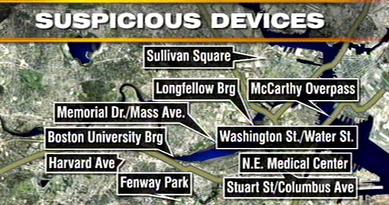Why Teach Digital Rhetoric?

This week in Boston, there is yet another example of how the medium was inappropriate for the message when it came to the use of technology and a "viral" appeal to unsuspecting audiences. According to Reuters, which has followed the story in items like "TBS Contrite for PR Debacle" and "Turner to Pay Costs of Boston Security Scare," the traditional broadcasting corporation will suffer economic consequences for its miscalculated attempt to use on-the-street, alternate reality techniques. A few generalizations for them to put on their PowerPoint slides under "Lessons Learned":
- The first rule of any alternate reality event is not to scare people. That's why the work of Jane McGonigal is so successful.
- People want new messages not new delivery devices. As a general principle, new hardware is often off-putting to the general populace. A good YouTube video or song on a MySpace page would have achieved their "guerrilla" objective much more successfully.
- As Mark Weiser points out in "The Computer for the 21st Century," if people don't see their environments as informational spaces, they don't feel anxiety about inhabiting them: "there is more information available at our fingertips during a walk in the woods than in any computer system, yet people find a walk among trees relaxing."
Nick Montfort of Grand Text Auto has a great round-up on LED art and site-specific pieces that have raised police suspicion.
Update: Henry Jenkins also has some interesting meditations on the story in connection with his interview with Michael Counts.
Labels: institutional rhetoric, ubiquitous computing, youtube rhetoric

0 Comments:
Post a Comment
<< Home